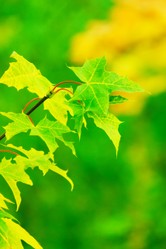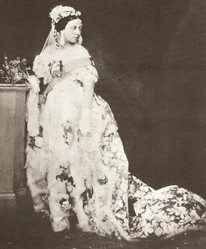Stefano Mancuso, an Italian scholar of plant neurobiology, the study of the communications that pass through the complex world of plants, particularly trees, takes a few significant, but oft-overlooked stories in the world of plant science and draws out their historical importance, which has too often been overlooked in the history of science. Tree Stories is a short, highly enjoyable book that is written in a highly readable manner and is free of the verbosity that sometimes mars academic works. Yet despite being easy to read it is seriously informative and takes readers into little known nooks and crannies of the arboreal world. A good read.

Tree Stories: a Review
by frankbeswick
This book is a highly readable volume in which the author, an expert on trees, reveals through a series of short narratives the importance of trees to human existence.
Roots of an Obsession
I am fortunate to have seen this book, as it came from Maureen as a wedding anniversary present, our forty fourth to be precise, and this is fitting for a volume that deals with oft-serendipitous discoveries by scholarly, often obsessive people. Stefano Mancuso begins with his childhood obsession with paper in the form comic books, which he avidly bought with his pocket money. He uses this obsession well in his development of the narrative, as he wishes his readers to pay serious attention to the frequently overlooked contribution that plants make to human existence, paper being one major instance of this contribution. He enlightens readers with the observation that while animals make up 0.03 per cent of the world's biomass, plants make up 85 per cent, yet we often treat animals as though they were more representative of the living world than their more numerous botanical fellows.[The remaining fourteen per cent is fungi and bacteria.]
The readers' interest is quickly caught by Mancuso's friendship with a fellow obsessive, Professor Henri, and the fruitful interaction that their mutual obsessions produced. There is humour in Mancuso's account of a visit to the bibliophile Henri's book-lined flat with its thousands of volumes. For humour's sake I told Maureen that the flat inspired me and got a firm No! Yet this pleasantly entertaining element of the book led to their mutually examining an eighteenth century note book that shed light upon the planting of the liberty trees, which were liberally planted in France to celebrate the French Revolution. There is a modicum of humour elsewhere in the book in Mancuso's dealings with a somewhat eccentric and obsessive Japanese friend. But this is not a primarily humorous book, for there are sad elements in its tales, such as the pointless and unnecessarily destructive felling of Prometheus, a tree which at six thousand years of age was almost certainly the oldest living being on the planet.
Early in the book Mancuso tackles the eco-crisis. The book's account of ideas for completely redesigning cities is thorough, but not original, but it gives a well-informed account of the historical background to modern thinking on city design. The writer draws on not only modern sources, but also upon prescient thinkers such as the forward thinking John Evelyn, the seventeenth century naturalist who was first to alert us to the destruction caused by tree-felling and the lung-damaging effects of coal burning. Mancuso presses on readers the need to take a non-anthropocentric attitude to city design, which would lead to humans recognizing the claims of non-human species, including plants, in the design of the urban environment.
Stories of Trees
The book then proceeds to deal with cases of innovation in botanical studies. The first instance is Leuzinger and Bader's discovery of tree trunks that continue to grow after the tree has been felled, zombie stumps as they are nicknamed. Mancuso observes that the discovery was first made in the 1830s, by Duprochet, then forgotten, an example of the neglect of botanical study at which Mancuso rails. Leuzinger and Bader discovered that the survival of these stumps was due to natural root grafting, and it led them to realize that forest trees are not a group of isolated individuals, but a community of co-operating beings, whose interlocking roots mutually support one another and thus protect against storms. . This made them challenge the conventional Darwinism that regards the principle of competition to be the driving force of evolution, a position that gave backing to Mancuso's belief that science errs when it judges the rules that apply to animals to be appropriately apply to plants.
The author then proceeds to a subject that delights him, his membership of a research project that examined the magnificent violins produced by the master craftsmen of Cremona, e.g Stradivarius et alii. This was to respond to the wind damage from a storm that attacked the forest of red spruce from which the violins were made. This chapter is worth reading for the sense of joy that permeates Mancuso's work. He explores the qualities of the wood that produce the unique sound of these wonderful paragons of the violin makers art.
Another story deals with the strange capacity of science to produce unexpected discoveries, in this case the fact that research intended to support a flawed astronomical theory produced highly beneficial results for archaeology and botany. The tale begins with astronomer Perceval Lowell's obsessive and deluded belief that there were canals on Mars and his construction of an observatory built to prove it. Eventually one of his disillusioned researchers walked away from the project and took up the study of sunspots, which he wrongly believed were linked to climate cycles. Looking for evidence of climate fluctuations in tree rings he accidentally discovered the significance of tree rings for archeological dating and so discovered the discipline of dendrochronology, a subject taken further by his successors.
Readers are also treated to a detailed account of the use of botanical investigation in the case of the abducted and murdered Lindburgh baby. The account is thorough and informs readers in detail about the botanical evidence which resulted in conviction and execution of the killer. This was a fascinating account well worth reading.
Bananas and Drugs!
Yet, as I have pointed out the book can be humorous at times, and perhaps the most amusing element in the book is a detailed account of the 1967 craze for the supposed capacity of bananas to get you high. I can vaguely remember the craze, but as I was at theological college at the time it had no effect on my behaviour. The author gives an amusing account of the three or four months in which what was probably a hoax was foisted upon the world. For some reason fake news got round that bananas contained a drug. Bananas sold out in vegetable shops, teenagers were buying up bunches of bananas and rumours [totally unfounded] circulated that the police were confiscating bunches of them from young people. Furthermore, articles were published on the supposed parts of the banana that were alleged to be hallucinogenic, the white within the skin, and the articles continued by outlining the technique for producing drugs from banana skins. Certain characters wrote about the highs that they had obtained from the fruit. Eventually the mania subsided and life got back to normal. Yet the banana is not a tree, it is just an overgrown herb, Manncuso tells us.
Tree stories is a thoroughly enjoyable and informative book. I recommend it to readers. As it is a very recent publication it is on Amazon, but I cannot get it to download to this website, so I have included other books by Stefano Mancuso and will update my site when possible. Enjoy.
I am an Amazon associate and earn money by qualifying purchases on this page.
Books by Stefano Mancuso
paid link
 | The Revolutionary Genius of Plants: A New Understanding of Plant Intelligence and Behavior |
 | The Nation of Plants |
You might also like
Thinking about NalediThe new discoveries in the Rising Star cave in South Africa arouse questions ...
The History of the Wedding Dresses: From Beautiful Gowns to Wh...Wedding dresses have changed a lot over the years. The colour is the most not...
The Start of the Gregorian Calendar: The Missing 10 DaysThink the calendar you know has been around forever? Think again! In 1582, th...



 Pilgrimage. A review19 days ago
Pilgrimage. A review19 days ago
 Leo the Fourteenthon 05/09/2025
Leo the Fourteenthon 05/09/2025
 The Melsonby Hoardon 03/25/2025
The Melsonby Hoardon 03/25/2025




Comments
Thank you!
I do not have access at this time to Tree Stories (which doesn't matter in a way, because one could say that I somewhat have read it through your complete but succinct review). But it looks like the library system here has Stefano Mancuso's The Incredible Journey of Plants, The Nation of Plants and The Revolutionary Genus of Plants.
It also looks like the library system here has by Peter Wohlleben Can You Hear the Trees Talking, Forest Walking, The Heartbeat of Trees, The Hidden Life of Trees, The Inner Life of Animals, The Power of Trees, The Secret Wisdom of Nature and The Weather Detective.
So in a somewhat related, somewhat unrelated direction, there must be tree books specific to the British Isles.
Would there by any east-pond writers that you'd recommend for reading about knowing beloved ornamental and practical trees and about walking through forests and woodlands?
Would there be any east-pond writers that write specifically about the British Isles what Mancuso and Wohlleben write about for elsewhere?
I have read the secret life of trees.it is an enlightening book.
It appears that western pond-siders still are quite taken with The Revolutionary Genus of Plants by Stefano Mancuso. Have you read it or any other books authored by him before his recentest Tree Stories?
Peter Wohlleben also is among tree writers whom western pond-siders seem to be listening to in terms of buying his and Mancuso's books.
Western pond-siders apparently like The Hidden Life of Trees, The Inner Life of Animals and The Secret Wisdom of Nature. Might you have read anything by him? If so, what would you recommend?
Thank you!
The second paragraph in my comment below yours has a mistake ;-{!
It should say that, at about the same time as Country Joe's statements about smoking dried banana skins, researchers and The East Village Other editor talked about the commonality of serotonin in bananas and LSD.
Mass hysteria is always a valid subject of research, whatever side of the water it is on.
Online sources designate bananadine as the fictitiously psychoactive substance within banana peels. They mention the hoax as linked musically, albeit non-intentionally on his part, to the Scottish musician Donovan Phillips Leitch's song Mellow Yellow. They note the association between the Donovan song -- with mellow yellow misinterpreted because of color for a psychedelic banana -- and the edible due to American psychedelic rock singer Country Joe McDonald (born Joseph Allen McDonald) talking about getting high from smoking dried banana skins.
Online sources say nothing about the basis for the erroneous McDonald declaration even as they say that concurrently the editor of The East Village Other publishing officers and researchers saw in bananas and serotonin the commonality of serotonin.
It seems to fit into the mass hysteria -- such as The War of the Worlds panic Oct. 31, 1938 -- that American researchers study.
Would mass hysteria be a respected topic for publishing and research on your eastern-pond side?
That information was not shared.
Stumps can grow roots and sprouts. I have seen this with stumps still upright -- and whose surface I therefore use as a dining table for the food that I leave for wildlife -- in the ground.
I have not seen this with stumps lying sideways on the ground and their roots either along the surface or sometimes with most of their roots still in the ground.
Were the zombie stumps growing roots or roots and sprouts? Were they standing upright, leaning, or sidling along the ground? Or would that information not have been shared by Duprochet or then by Bader and Leuzinger?
I am not clear on the answer to this question.
The first paragraph under your second subheading, Stories of Trees, discusses zombie stumps.
Were the Duprochet, then the Bader and Leuzinger zombie stumps left with above- and under-ground remnants above-ground or part above- and part below-ground?